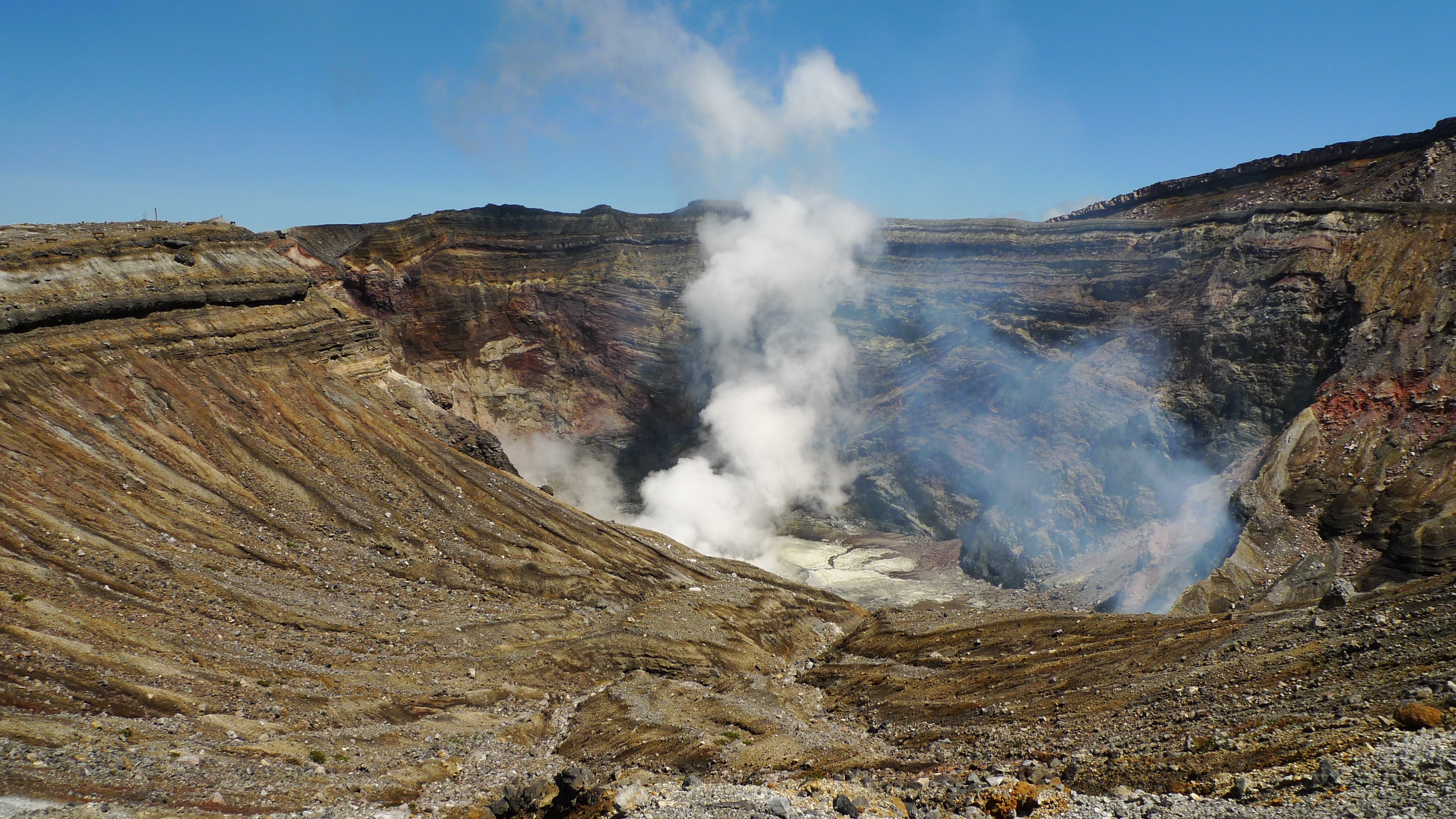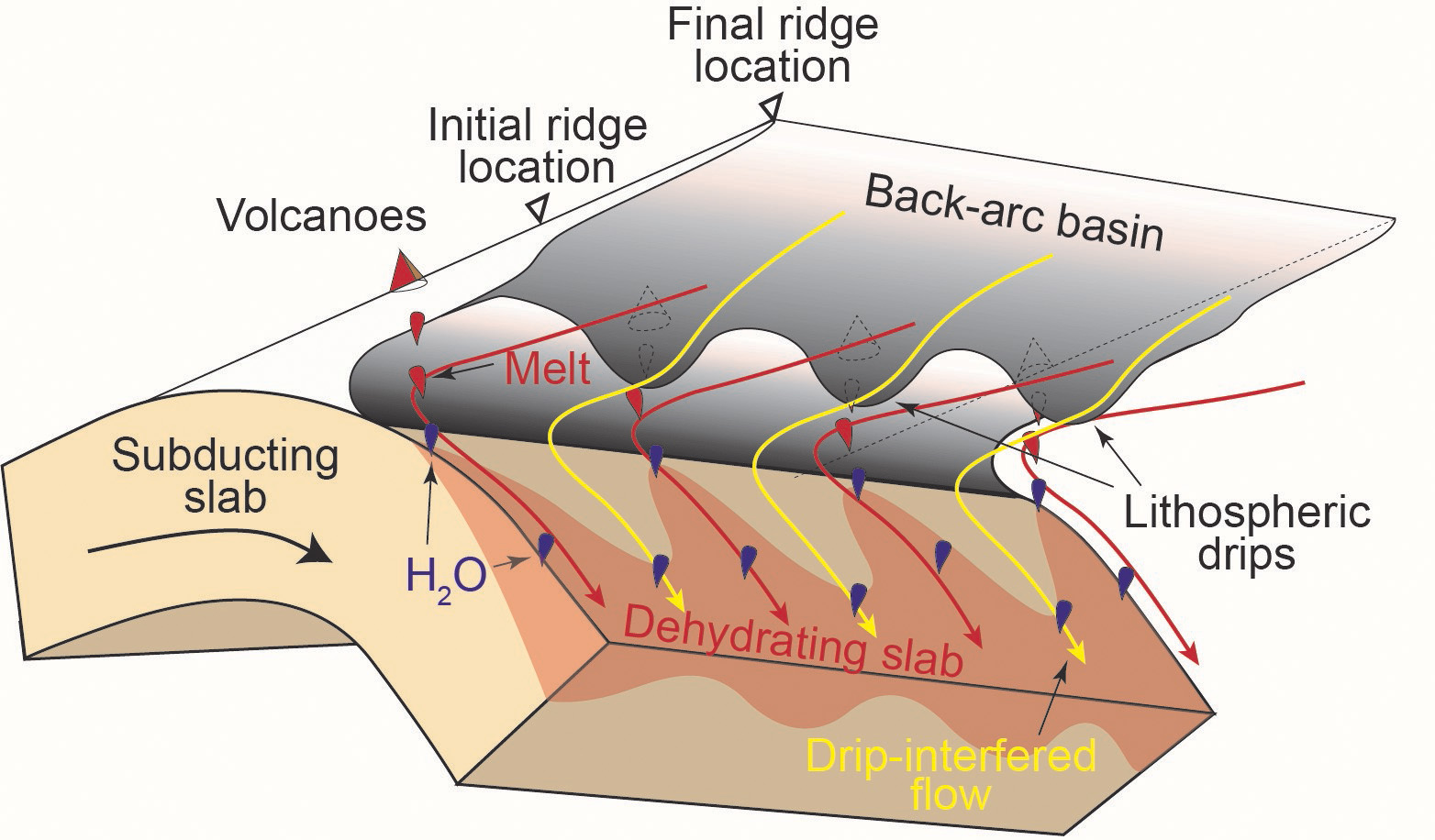New Study Explains Formation of Volcano Clusters
Researchers use computer simulations to uncover the origins of the volcano clusters in Northeast Japan and Izu-Bonin
Research published online in Geophysical Research Letters in March 2021

Volcanic arcs are formed when two tectonic plates converge together and are known to have a distinct variation in temperature in the mantle. Volcanic gas erupts in the Aso volcano in Kyushu, Japan.
Image credit: Changyeol Lee
Earth’s surface is in constant flux, resulting in the formation of many geologic features, like long chains of volcanic arcs, which originate in oceans or on continents, where two plates converge, and one oceanic plate sinks below another. The expelled water from the sinking plate undergoes a pressure and temperature increase, causing the overlying mantle to melt, forming magma, which rises at various regions forming chains of volcanoes, with a distinctive “arc” shape when seen from above. Water and temperature distribution in the mantle are deciding factors that dictate the location of the mantle melt and the resulting distribution of volcanic chains.
The clustered distribution of the arc volcanoes of Northeast Japan and Izu-Bonin suggests an uneven temperature distribution in the mantle during formation, but what caused this uneven distribution? One theory relates the uneven temperature distributions to the spreading of the back-arc, which is a region formed behind these volcanic chains.
Professors Changyeol Lee from Yonsei University in Korea and Ikuko Wada from the University of Minnesota, USA, further analyzed this theory. “We used three-dimensional numerical models replicating volcano clusters in Northeast Japan and Izu-Bonin, to study how the back-arc spreading affects temperature and flow conditions beneath the arc,” explains Professor Lee.
Their simulations showed that the back-arc spreading reduces the thickness of the back-arc plate (lithosphere) and activates the upward mantle flow below the back-arc. When back-arc spreading stopped, upward mantle flow weakened, and the thinner unstable lithosphere base then sinks into the mantle, forming downward protrusions. These protrusions, called “lithospheric drips,” limit the mantle flow and lower the mantle temperature beneath the arc. In between these protrusions, however, the mantle flow is not obstructed. This results in alternating hot and cold regions in the mantle and the magma generated in the hot regions is responsible for the volcano clusters.

Conceptual model for the formation of nascent lithospheric drips next to the thinned back-arc lithosphere and its effect on the mantle flow pattern and the thermal conditions of the sub-arc mantle and slab, based on computational model calculations. The size of nascent lithospheric drips and their effects on the depth of slab dehydration are exaggerated.
Image credit: Lee and Wada (2021) Geophysical Research Letters, copyright AGU
The results of their simulations indicate that the volcano clusters were formed after the back-arc spreading stopped. This is in agreement with other studies that put the time of formation of these volcano clusters after the opening of the East Sea (which was formed due to the back-arc spreading). “This study is the first to quantitatively prove the causal relationship between the sea opening and volcano clustering using three-dimensional numerical modeling,” comments Professor Lee.
The findings contribute to our understanding of the Earth’s geologic history and arc volcanism which only occurs in the Earth among our solar system.
Recommended Articles
Professor Byeong-Su Kim
New study demonstrates that “deformable” electronics are not a stretch
Professor Yeonjin Yi